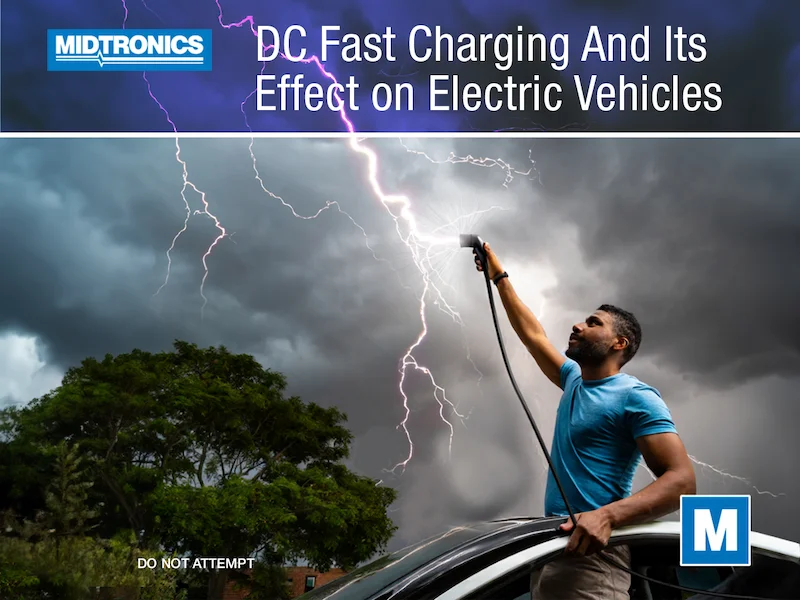As electric vehicles continue to grow in popularity, the supporting infrastructure has been a key focus of attention. Among the many aspects of EV ownership, charging is perhaps the most critical—both in terms of convenience and the potential impact on the vehicle’s battery health. One of the most significant advancements in this area is DC fast charging, also known as Level 3 charging, which promises to reduce charging times drastically. However, while the speed of DC fast charging is undeniably beneficial, questions around its impact on EV batteries persist.
In this article, we’ll explore how DC fast charging works, how it differs from other types of charging, its effects on an EV’s battery health and lifespan, and what might constitute the best charging options for EV owners. The aim is to provide a comprehensive understanding of these issues that can help both industry professionals and EV users make informed decisions.
How DC Fast Charging Works
Unlike Level 1 and 2 charging, which use alternating current (AC) supplied by residential and commercial power sources, DC fast charging—also known as direct current charging—uses, as the name implies, direct current. This allows for a much higher power transfer, significantly reducing charging time. To put it in perspective, DC fast chargers can replenish up to 80% of a battery’s capacity in just 20 to 30 minutes.
This is achieved by converting the AC power from the grid into DC power before it reaches the vehicle. The charger bypasses the car’s onboard charger, delivering the DC power directly to the battery. This method allows for a high-power transfer, with some chargers capable of delivering up to 350 kW.
When the charger and the vehicle ‘shake hands’, though, the actual rate of charge can be considerably lower. That’s a safeguard in place since many EVs aren’t yet capable of receiving DC fast charging at the highest rates.
How Fast Charging Differs from Other Charging Types
The main difference between fast charging and other types, such as Level 1 (standard household outlets) and Level 2 (public and home-installed charging stations), lies in the speed of charging. While Level 1 and 2 chargers might take several hours to fully charge an EV, a DC fast charger can do the same job in minutes.
Another important difference is the infrastructure required. DC fast chargers are more complex and expensive to install than their slower counterparts, often requiring upgrades to the local power grid. As such, they are typically installed in strategic locations such as along highways or in commercial areas.
Of course, the charging network is in a fledgling state, especially compared with the the fueling network for ICE vehicles. For drivers that plan on depending on high-speed charging, common issues include long waits in lineups at available charging stations that are few and far between as well as issues with stations being keep in service.
How DC Fast Charging Affects an EV’s Battery Health and Life
While the speed of DC fast charging is undoubtedly convenient, it does come with some potential downsides. The most significant of these is the potential impact on the battery’s health and lifespan.
High-speed charging generates heat, and excessive heat is one of the main factors that can degrade a battery over time. This is why some manufacturers recommend using DC fast charging sparingly, especially if the battery is near its maximum state of charge. When EV batteries are exposed to the high charge rate, the potential for dendrites to form in Li-Ion battery cells increases greatly. These little tendrils can cause an internal short, and they develop at a much faster pace with DC fast charging as opposed to lower charging rates.
Additionally, the high power levels associated with DC fast charging can lead to increased wear and tear on the battery. Over time, this can result in a reduced total capacity, meaning the battery won’t hold as much charge as it once did.
How much does DC charging affect an EV’s battery? That varies according to the frequency it’s used, the ambient and battery conditions while charging, and the vehicle make and model. One study reports that charging under normal conditions has no statistical difference, really. But where the impact comes into play is charging during extreme heat or extreme cold without preconditioning the battery.
Best Options for EV Charging
Given the potential impact of DC fast charging on battery health, what are the best options for EV charging? The answer largely depends on individual usage patterns and needs.
For daily charging, Level 2 chargers strike a good balance between speed and battery care. These chargers can fully recharge most EVs overnight, making them ideal for home use. They’re also commonly found in workplaces and public charging stations, offering a convenient option for topping up your battery while you work or shop.
DC fast charging, on the other hand, is best reserved for long journeys when you need to replenish your battery quickly. It’s also worth noting that many newer EV models come with thermal management systems that help mitigate the heat generated by fast charging, making it a safer option.
Conclusion
While DC fast charging offers significant benefits in terms of speed and convenience, it’s important to understand its potential impact on battery health. By choosing the right charging option for your needs and using DC fast charging judiciously, drivers can enjoy the benefits of their EV while ensuring it stays in top condition for years to come.
And should a noticeable drop in range or performance occur, repair shops should be prepared to service EV batteries. In some cases, a repair may be necessary, replacing degraded battery cells or modules to eliminate the condition. Facilities can equip themselves with the necessary diagnostic and charging tools so, when their EV customers require servicing, they’re capable of dealing with even the most severe situations without turning them away.




